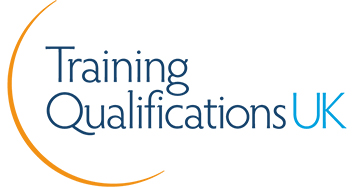
Diet And Nutrition Is Important For Maintaining Health
Our nutrition course online explores the importance of diet and nutrition. It pays particular attention to the dangers of being overweight or obese and the associated health risks, whilst recognising the importance of maintaining a healthy lifestyle.
Did you know that most of the world’s population live in countries where overweight and obesity kills more people than underweight? Research shows that 42 million children under the age of 5 were overweight or obese in 2013 – obesity is preventable.
What are overweight and obesity?
Overweight and obesity are defined as abnormal or excessive fat accumulation that may impair health. Some recent World Health Organization global estimates:
- In 2014, 39% of adults aged 18 years and over (38% of men and 40% of women) were overweight
- The worldwide prevalence of obesity has more than doubled between 1980 and today
- Currently, more than 1.9 billion adults are overweight. 600 million of these are obese
- That’s about 13% of the world’s adult population (11% of men and 15% of women) who are obese
The causes obesity and overweight?
The basic cause of obesity and overweight is an energy imbalance between the calories in the food and drink that you eat and the calories burned up through the activities you do. Throughout the world there’s been an increased intake of high calorie foods that are high in fat and sugar; a decrease in physical exercise due to sedentary jobs, changes in modes of transport, and increasing urbanisation.
How can you tell if you weigh too much?
A few pounds gained here and there over the year (especially over the holidays) may not seem like a big issue but these pounds add up over time. Knowing two numbers may help you understand your risk of developing health problems: your body mass index (BMI) score and your waist size in inches.
Calculating your Body Mass Index
The body mass index (BMI) is a way to tell whether you are at a normal weight, are overweight, or have obesity. It measures your weight in relation to your height and provides a score to help place you in a category:
- Normal weight: BMI of 18.5 to 24.9
- Overweight: BMI of 25 to 29.9
- Obesity: BMI of 30 or higher
You can use this BMI healthy weight calculator to find out.
What is your Jean size?
Having too much fat around your midrift may increase health risks even more than having fat in other parts of your body. Men who have a waist size of more than 40 inches and women with a waist size of more than 35 inches have higher chances of developing diseases related to obesity.
Common health risks of overweight and obesity
If you know that you’re a little overweight, but feeling okay about it now, then you may be indifferent about watching your nutrition to prevent health problems. Extra weight puts strain on all of your body systems, putting you at risk for developing one or more of the following health problems:
Having a raised BMI is a major risk factor which can cause:
- High blood pressure
- Coronary heart disease
- Stroke
- Cancers
- Type 2 diabetes
- Osteoarthritis
- Kidney disease
- Fatty liver disease
- Sleep Apnea
- Pregnancy problems
How can overweight and obesity be reduced?
The good news is that overweight and obesity, as well as their related diseases, are largely preventable. It’s best to tackle any overweight issues early before they become out of hand. Understanding the nutrition and health needs of children and young people goes a long way in preventing childhood obesity.
Obese children have a higher chance of obesity, disability and premature death in adulthood. As well as increased future risks, obese children can experience difficulties breathing, an increased risk of fractures, hypertension, insulin resistance and psychological effects.
As an individual here are some 10 actions you can take:
- Have a healthy breakfast like oats to start your day
- Replace fizzy drinks, tea and coffee with water
- Cut calorie intake from fats and sugary treats
- Reduce ‘junk’ processed foods and takeaways
- Find new healthy foods you really enjoy
- Try cooking new foods in different ways – grill instead of frying
- Increase your amount of fruit, vegetables, whole grains and nuts
- Control your portion size – try eating six smaller meals
- Stop eating when you’re full or not hungry
- Take part in regular physical activity such as walking
Learning the risks of ineffective weight management on our Certificate in Nutrition & Health QCF Level 2 Course as well as applying the principles of healthy eating can have a huge impact. Adopting better diet and nutrition habits leads to a healthier lifestyle.





Leave a Reply